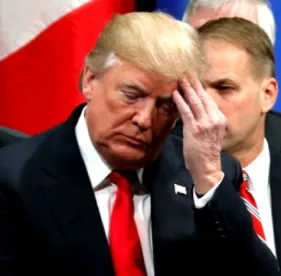On Friday, August 23, President Trump signed into law the “Small Business Reorganization Act of 2019.” The SBRA will take effect in February 2020 and, at long last, may provide some (although probably minimal) relief to businesses, large and small, from the threat of questionable and small dollar bankruptcy preference claims. The new law requires bankruptcy trustees and others who commence preference actions to consider, before commencing suit, an alleged preference recipient’s statutory defenses based on “reasonable diligence in the circumstances and taking into account a party’s known or reasonably knowable affirmative defenses.” It also amends a bankruptcy venue provision that, if applied to preference suits, may reduce the number of small (under $25,000) preference cases filed.
By way of background, under section 547 of the Bankruptcy Code, a bankruptcy trustee or a person authorized to exercise the trustee’s powers (such as the debtor, a creditors’ committee or a litigation trust) may claw back payments made to creditors by the debtor during the 90 days prior to the bankruptcy filing date, if (1) the payment was made on account of an antecedent debt (e.g., an open invoice), (2) the payment was made when the debtor was insolvent, and (3) the payment allowed the creditor to recover more than it would have recovered if the payment had not been made and the creditor instead received payment on its claim through the bankruptcy process.
Since creditors are rarely paid in full in a bankruptcy case, and the Bankruptcy Code presumes that the debtor was insolvent during the 90-day preference period, the bar is low for a trustee to assert a preference claim. Often, the trustee will simply assert that every payment made by the debtor during the 90-day preference period was a preference, and threaten a lawsuit unless the recipient of the payment pays 90% of the alleged preference amount or demonstrates to the trustee that the payment was not a preference. In some cases, a thoughtful response by the recipient that outlines its defenses may be enough for the trustee to refrain from pursuing a claim. Unfortunately, those cases are rare. The end result, in the vast majority of cases, is that the alleged preference recipient finds itself in the unenviable position of having to choose between paying some amount to settle what it views as a non-meritorious case, and paying legal fees that may quickly add up to more than the probable cost of settlement.
The SBRA could, at least in theory, change this. Under the SBRA, the trustee must now consider an alleged preference recipient’s potential statutory defenses before filing a preference action “based on reasonable due diligence in the circumstances and taking into account a party’s known or reasonably knowable affirmative defenses under subsection [547](c).” In addition, the SBRA increases the dollar amount for venue to exist in the bankruptcy court in which the debtor’s bankruptcy case is pending (often, Delaware, New York, or some other distant forum) to pursue claims in that court, rather than in the federal district where the defendant resides. The new threshold amount is $25,000, up from the current amount of $13,650.
Whether these changes will, in practice, create a more level playing field remains to be seen. For example, many courts have ruled that the dollar threshold in the venue provision doesn’t apply to preference claims. So the fact that the new thresholds appear in the same section of the SBRA as the new requirement that trustees consider statutory defenses – a section titled “Preferences; Venue of Certain Proceedings” that addresses only these two amendments – may change nothing. And while a trustee’s consideration of potential statutory defenses before filing a complaint may weed out some complaints, the unfortunate reality is that the vast majority of cases have at least some shade (or slight tint) of gray.
Our best guess is that the SBRA will not, as a practical matter, cause any major changes in the preference practice – trustees will continue to send preference demands to the world, and will continue to file suit when there is even the slightest shade of gray to the case. And although not quite at the level of certainty as death and taxes, one can still assume that ignoring a trustee’s preference demand letter will result in a preference suit being filed. But, hope springs eternal, and if nothing else, the requirement that the trustee consider statutory defenses before filing a complaint should put an end to the days of trustees firing off complaints first, and asking questions later.




 />i
/>i
